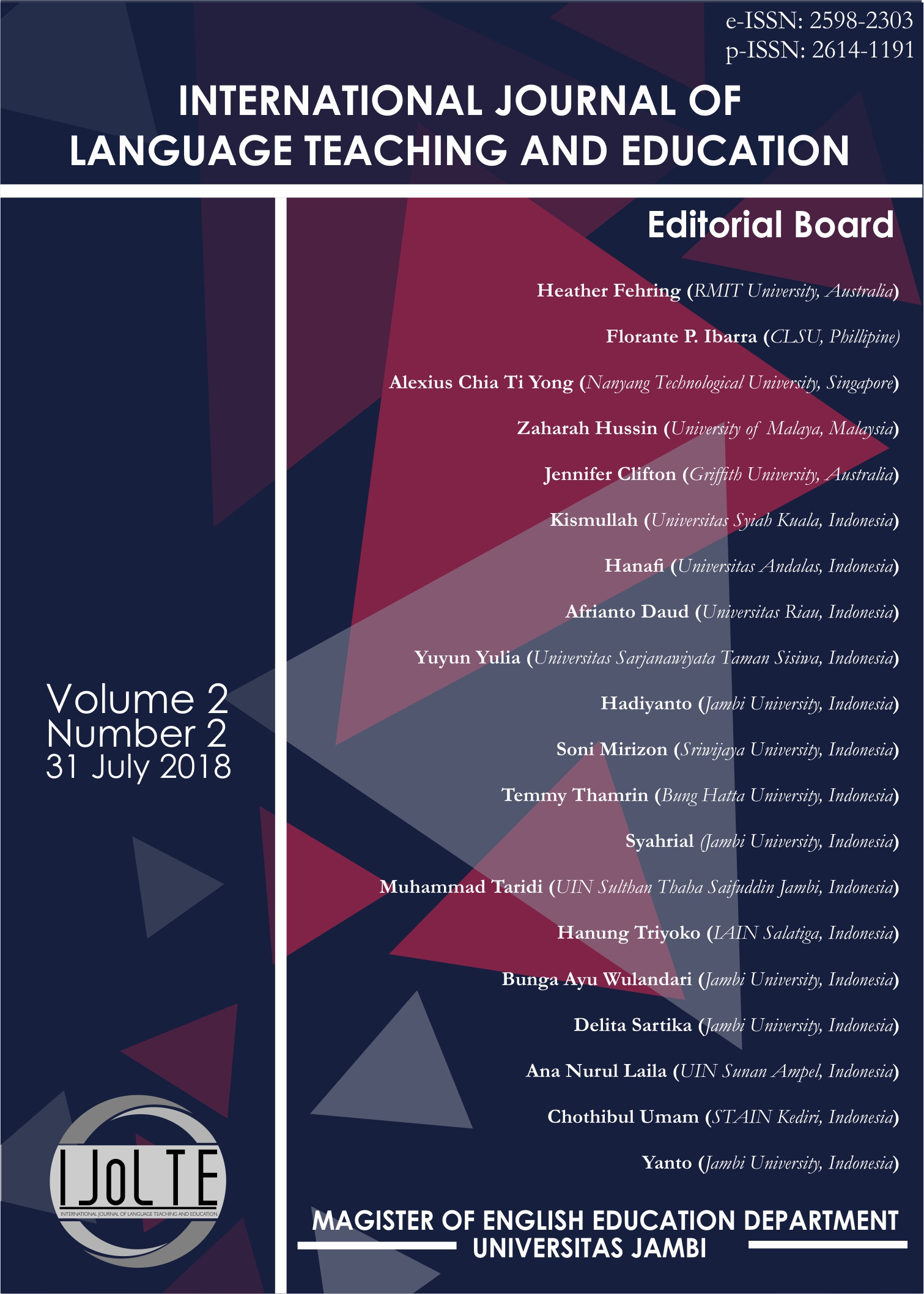Language Use and Sustainable Development: Opportunities and Challenges for Policy-Makers and Educators in Northeast Vietnamese Areas
DOI:
https://doi.org/10.22437/ijolte.v2i2.5048Keywords:
Tay language, Vietnam minority languages, Northeast Vietnam, Language educationAbstract
Vietnam represents a country with 54 ethnic groups; however, the majority (88%) of the population are of Vietnamese heritage. Some of the other ethnic groups such as Tay, Thai, Muong, Hoa, Khmer, and Nung have a population of around 1 million each, while the Brau, Roman, and Odu consist only of a hundred people each. Living in northern Vietnam, close to the Chinese border (see Figure 1), the Tay people speak a language of the Central Tai language group called Though, T'o, Tai Tho, Ngan, Phen, Thu Lao, or Pa Di. Tay remains one of 10 ethnic languages used by 1 million speakers (Buoi, 2003). The Tà y ethnic group has a rich culture of wedding songs, poems, dance, and music and celebrate various festivals. Wet rice cultivation, canal digging and grain threshing on wooden racks are part of the Tà y traditions. Their villages situated near the foothills often bear the names of nearby mountains, rivers, or fields. This study discusses the status and role of the Tà y language in Northeast Vietnam. It discusses factors, which have affected the habitual use of the Tay language, the connection between language shift and development and provides a model for the sustainability and promotion of minority languages. It remains fundamentally imperative to strengthen and to foster positive attitudes of the community towards the Tà y language. Tà y’s young people must be enlightened to the reality their Tà y non-usage could render their mother tongue defunct, which means their history stands to be lost.
Downloads
References
[2] Bang, P. (1991). La Van Lot. Lgonslgong: Ethnic Culture Publishing House.
[3] Bang, P. (1994). PhongslÆ°, (collection, transcription of Nom, amending the compila-tion, translation). Lgonslgong: Ethnic Culture Publishing House
[4] Buoi, K. T. (2003). Multilingual education in the community of minority peoples of Vietnam. National University, Ho Chi Minh Cit, Vietnam. Retrieved from http://palaso.org/ldc/parallel_papers/bui_khanh_ thea.pdf
[5] Chau, H. T. (1991). The situation of language exposure and teaching of ethnic minority languages in the mountains of northern Vietnam," International Conference on lan-guage education, cooperation and development. Proceedings of the International on Language Education, Cooperation and Development (pp. 283-290). HCMC Proceedings of the International Conference.
[6] Chau, H. T. (2001). Development of phonetic alphabet for ethnic minorities in Vietnam. Ethnic Culture Publishing House.
[7] Dien, K. (1985). Demographic characteristics of ethnic minorities in northern moun-tainous provinces. Journal of Ethnology (1), p. 25-30., 25–33.
[8] Dinh, P. T. (2010). Multilingual education as a way towards achieving quality univer-sal primary education in Vietnam: Good practices and policy implications. Language MDG Conference, SEMEO.
Downloads
Published
Versions
- 2018-07-31 (1)
- 2018-07-31 (1)
How to Cite
Issue
Section
License
The Authors submitting a manuscript do so on the understanding that if accepted for publication, copyright of the article shall be assigned to International Journal of Language Teaching and Education (IJoLTe) and Magister Program of English Education Department, Universitas Jambi as publisher of the journal. Copyright encompasses rights to reproduce and deliver the article in all form and media, including reprints, photographs, microfilms, and any other similar reproductions, as well as translations.
IJoLTe keep the rights to articles that have been published. And, the authors are permitted to disseminate published article by sharing the link of IJoLTe' website. Authors are allowed to use their works for any purposes deemed necessary without written permission from IJoLTe with an acknowledgement of initial publication in this journal.
IJoLTe and Magister Program of English Education Department, Universitas Jambi, and the Editors make every effort to ensure that no wrong or misleading data, opinions or statements be published in the journal. In any way, the contents of the articles and advertisements published in IJoLTe are the sole and responsibility of their respective authors and advertisers.
If the article was jointly prepared by more than one author, any authors who submitting the manuscript warrants that he/she has been authorized by all co-authors to be agreed on this copyright and license notice (agreement) on their behalf, and agrees to inform his/her co-authors of the terms of this policy. IJoLTe will not be held liable for anything that may arise due to the author(s) internal dispute. IJoLTe will only communicate with the corresponding author.
By submitting the article/manuscript to this journal, the authors agree with this policy and consciously agree that IJoLTe does not provide royalties or other fees to the authors for their published articles. By agreeing this policy, IJoLTe ensures that published articles are publicly accessible and will be free of charge for the readers. No specific document sign-off is required.
Users of this website will be licensed to use materials from this website following the Creative Commons Attribution 4.0 International License. Please use the materials accordingly
You are free to:
- Share — copy and redistribute the material in any medium or format
- Adapt — remix, transform, and build upon the material for any purpose, even commercially.
- The licensor cannot revoke these freedoms as long as you follow the license terms.








1.png)
